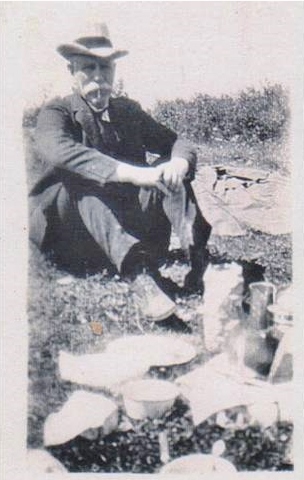THE GENIUS OF CHARLES HAVELOCK TAYLOR
/In 1890, Charles Havelock Taylor (1859-1953), a self taught engineer and geologist, was working for the Canada Consolidated Gold Mine Company that was mining the Gatling Mine in Deloro. He had previously proven his entrepreneurial talent in Bridgewater (now Actinolite north of Tweed) as he wrote for a Royal Commission on mining:
" I have been working the actinolite mills at Bridgewater. I put up the works there, and I have three patents on the process, one for breaking the stone, one for pulverising, and the other for a composition for roofing."
In Deloro, however, he worked to improve the output of gold, proving again his talent. He wrote of the gold in Deloro:
"We are at present taking the gold out of the tailings of the Consolidated mine by amalgamation. Our process is a simple one and is not patented ; it simply consists in using a sodium amalgam. With our mercury flowers, we use a copper amalgam. I do not think we get all the gold. In every ton we put through I think we leave $35 or $30; if assayed it will show that. By the first process the company adopted I do not think they got more than $7 or $8 a ton of concentrates, though it assayed from $60 to $70 to the ton..........In a building 40 feet square I can do twice as much as they can do with all their works at Deloro, which cover half an acre."
But Mr. Taylor's most ingenius idea came to him while working a dam in Quebec in 1895. He noticed water flowing over the spillway created air bubbles that became trapped under ice sheets at the bottom of the dam. The trapped air was compressed in the same way as air in a bicycle tire, causing the ice to bulge upward. And as an engineer, Taylor immediately realized the compressed air had the potential to be used as a power source.
And so was born the Taylor Air Compressor - a system that required no electricity and has no moving parts. Set it up, let the river run through, and the system provides a perpetual source of air power.
1904
The first plant to be built was in a cotton mill in Magog, Quebec followed by one in Ainsworth B.C.. But the most significant example of the Taylor Air Compressor in Ontario is that installed by Order of the Dominion of Canadain the Peterborough hydraulic Lift Lock in 1899 where the natural gravity fall of water powered the lock's internal machinery.
For more on Charles Taylor, written by his great- grandson, Robert Hawkins, CLICK HERE
Note: In 1880, Charles Havelock Taylor, while living in Montreal, met and married Helen Maria Pye (born 1866; died 1929). Helen bore Charles three children:- Eva born 1883; died 1962 , Arthur Havelock born 1894; died 1964 and Helen born 189?; died 1921. In 1911, Charles married Gertude Mabel Morgan, and had 5 children together, Sylvia born 1915, Charles Havelock (Bud) born 19??, Phyllis born 19?? ; died 1941, Roy born 19?? and Ray born 19?? (deceased).
Robert Hawkins wrote: I am a product of the first family and have the Cobalt Daily Nugget from 1910 as well as hundreds of family photos taken in the late 1890's through to the 1930's. I have little or no history after 1910. Joan (of the second family) and Terry Mandzy of Madoc have that data.
Terry Mandzy (Husband of Helen Taylor of the second family) added more to our story.
CLICK HERE for download
Comment|: From Las Bodas, an old mining area of León, Spain
I thank you for your excellent work. I am investigating the water tube, following the trail of the illustrious Mr. CH Taylor. For your knowledge, there is a water tube in the Herrería de Compludo, León.
http://patrindustrialquitectonico.blogspot.com/2012/04/la-herreria-de-compludo-ponferrada-leon.html
An installation that keeps working to the delight of those who admire the heritage of ingenuity received from our elders. Thanks again Gregorio Iturregui todolomejortambienesposible@gmail.com


































